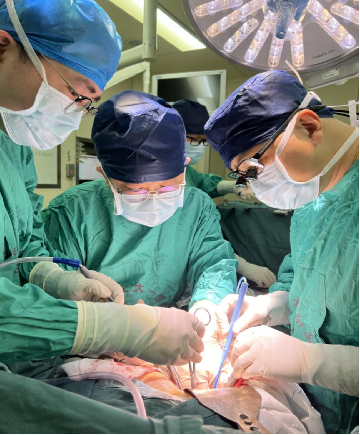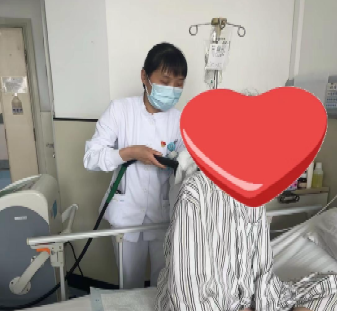Recently, Professor Zhang Xiaogang's team from Department of Liver Transplantation of the First Affiliated Hospital (FAH) of Xi’an Jiaotong University (XJTU) successfully performed liver transplantation for a patient weighed only 35 kg (BMI=12.6).

A 55-year-old female patient, surnamed Yun, was diagnosed with decompensated cirrhosis, portal hypertension, hypersplenism, extensive varicose veins in abdominal cavity, pancytopenia, hypoproteinemia, coagulation dysfunction, anemia and a large amount of ascites, which severely affected normal diet. The patient, 165 cm in height, lost her weight from 55 kg to only 35 kg (BMI=12.6). Conservative medical treatment yielded poor efficacy. Liver transplantation became the final effective approach to save her life.
Professor Zhang Xiaogang's team from Department of Liver Transplantation and Deputy Director Zhu Yaomin and Deputy Director Zhang Linjuan from Department of Anesthesiology and Perioperative Medicine comprehensively evaluated the patient's physical condition, determined anesthesia plans, immediately deployed personnel and materials, and fully prepared for the surgery.
The surgery was launched at 8: 18 pm on April 1. First, the surgeons carefully separated, cut off and repaired all ligaments, arteriovenous vessels connected with the diseased liver, and rapidly repaired the attached blood vessels and bile duct ends of the liver, anastomosed the corresponding blood vessels with corresponding bile ducts, immediately transplanted the donor liver into the body and restored blood supply, requiring high-efficiency and high-quality anastomosis. During the anhepatic stage, the operation time should be shortened as much as possible, letting the patient can tolerate the surgery and obtain proper postoperative recovery. The operation was carried out in a tense and orderly manner. Anesthesiologists applied precise-dose drugs to maintain the patient's vital signs. Visiting nurses fully prepared for preventing stress injury in advance, patrolled on time to ensure smooth blood transfusion, and prevented intraoperative hypothermia at different stages.

The over 6-h surgery was successfully completed, and intraoperative bleeding was only 300 ml. The patient's vital signs were stable and then she was transferred to surgical ICU for further observation.
Professor Zhang Xiaogang and Physician Wang Shanpei delivered daily rounds and made individualized postoperative treatment plans. The medical team from surgical ICU carried out meticulous postoperative treatment and nursing rehabilitation. After 5-day attentive treatment, the patient was transferred from surgical ICU to the liver transplantation ward of Department of Hepatobiliary Surgery III for subsequent rehabilitation.
At postoperative 3 weeks, the patient was discharged after proper recovery. She restored normal indexes and obtained increased body weight.